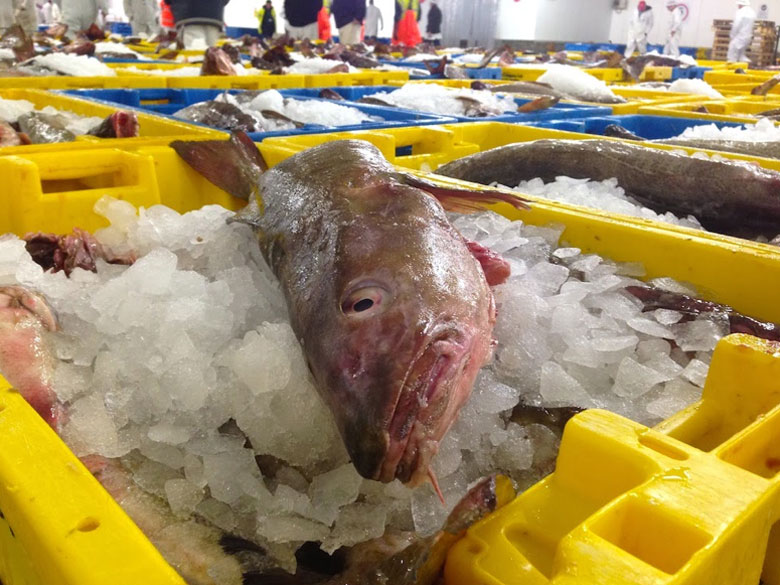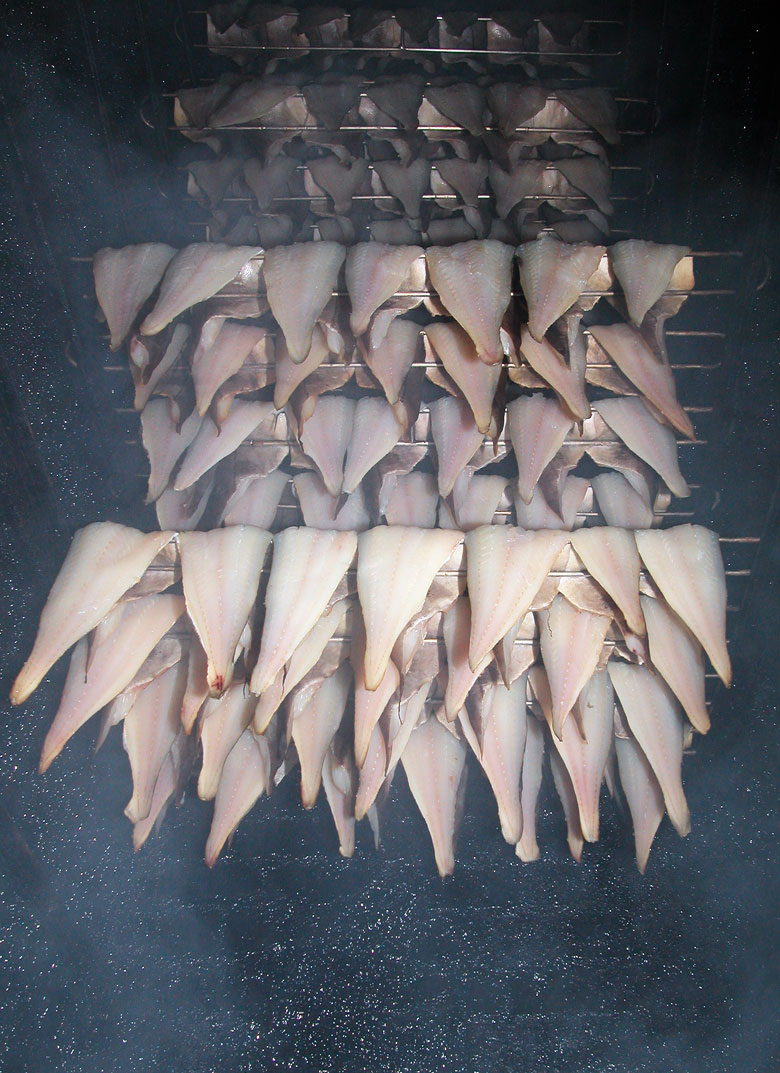Just like always
Packed with both flavour and history, Traditional Grimsby Smoked Fish is one of only nine British seafood products with elite protected PGI status – yet it’s still almost shamefully cheap. So give it a try, urges Chris Leftwich.
Long before refrigeration, smoking, drying and salting were the main ways of preserving foods. Smoking became prevalent as means of preserving fish from around the mid-19th century to the early 20th century as catches started to arrive at our shores from boats that were fishing ever further out to sea.
In the early days, fish were smoked in old smokehouses with kilns that resembled giant chimneys. The smokers would add a lot of salt, colour and smoke in order to disguise the raw material which was not always of the best quality. Thus the bright yellow coloured product became de rigueur and small block fillets of whiting or haddock smoked in this way even became known as golden cutlets.
However, with the spread of large mechanical kilns from the 1950s and the loss of our distant water fishing fleet due to the cod wars in the 1970s, a lot of the old techniques started to die out, along with the smokers who possessed them and the traditional smokehouses where they worked.
It simply became easier and cheaper to mass-produce smoked fish in the modern kilns, which had been first developed by the Torry research centre in Aberdeen just after the Second World War. The fish, brined and dyed, could be laid out on racks and simply wheeled inside. The smoke was not even produced in the same room let alone underneath the fish. There wasn’t much skill involved and these modern kilns were not subject to the vagaries of the weather in the same way as the old one.
There was, however, a small group of smokers in Grimsby who fought against this trend and decided to stick with the traditional ways. The new mechanical methods were not for them. They insisted on using the old kilns to produce a unique product that simply could not be replicated with modern kilns. Operating from the old smokehouses, located in the old dock area, which are now listed buildings, they fought hard to maintain the traditional skills.
And they’re still working those old kilns in the old ways today. Usually bought on Grimsby Fish Market, the fish arrives daily from sustainable sources in Iceland, the Faroes or Norway. Always excellent quality, it’s filleted and brined without the addition of colour. This part of the process is known as curing and is essential to extract some of the moisture from the fish, so that the air in the kiln does not become too saturated, which would prevent the uptake of smoke. The fish are laid on racks on metal rods knowns as speats and allowed to drip to get rid of excess liquid before being carefully placed in the kilns (smoke holes). The damp sawdust is then lit and smoulders directly beneath the fish, cold smoking them over several hours.
Throughout this time, the smoker takes infinite care to ensure that the dampers on the kiln are adjusted to ensure that just the right amount of warm air flows through and passes over the fish. Experience will have taught them just how much adjustment to the airflow is required depending upon the prevailing outside weather conditions. Halfway through the process, the kiln is stripped and the fish at the bottom are removed and placed at the top, and those at the top brought down to the bottom, so that all the fish are smoked evenly.
The leader of this small group of Grimsby stalwarts was Richard Enderby. Operating a business with his brother that was originally started by his father Alfred, Richard realised he had a unique product that needed to be recognised. For 10 long years, he fought to get the recognition that this product deserved. Eventually, in October 2009, Traditional Grimsby Smoked Fish was awarded Protected Geographical Index (PGI) status, just like the Melton Mowbray pork pie, the Cornish pasty, Kentish ale and Scotch beef. (For a complete list, check out the map here.)
Traditional Grimsby Smoked Fish is one of only 62 food products in total and only one of nine seafood products in the UK to be currently awarded elite protected name status. In fact, the only other processed fish product is the Arbroath Smokie, that beautiful hot-smoked haddock from the Arbroath area. The UK is well behind some of our European neighbours in this regard: Portugal has 125 designated food products, France 217 and Italy 267.
It’s a unique selling point, but one that so far is not readily appreciated by the UK public. Richard is now trying to market the uniqueness of this superb product that ought to fetch a premium price in the marketplace, but hitherto has not been valued in the same way as some of the continental products such as Champagne or Parma ham. Hopefully, that will change: give it a try (you can buy direct online) and you’ll see just how good this wonderful and officially unique product is.

Chris Leftwich has been Chief Inspector to the Fishmongers’ Company since 1985 and responsible for the quality control of seafood sold at Billingsgate Fish Market. He serves on several government and industry advisory bodies in the UK dealing in all aspects of seafood and is a trustee of the Billingsgate Seafood Training School. Over the years, he has undertaken several consultancy projects in many countries around the world helping to set up seafood quality control systems and training inspectors.









